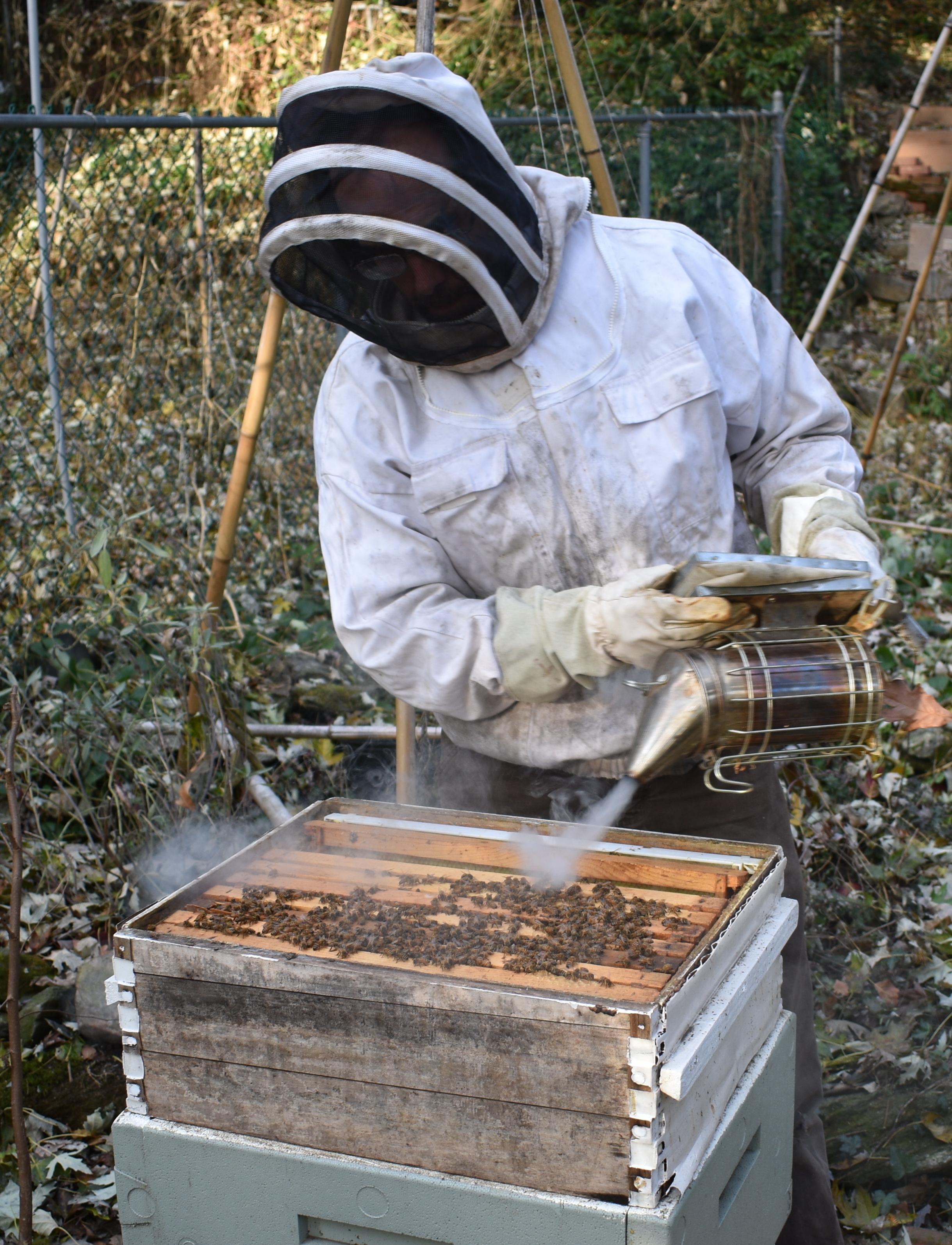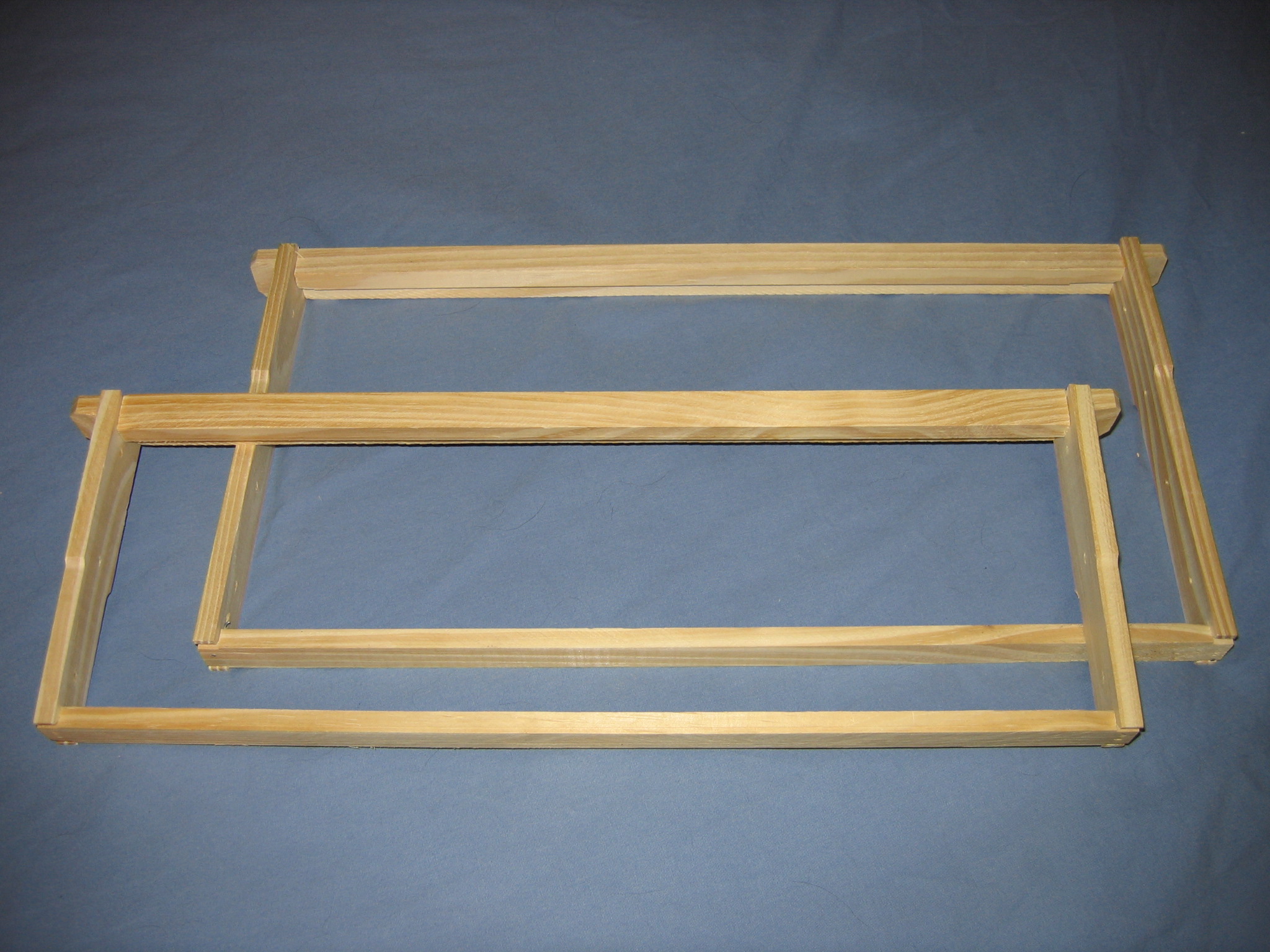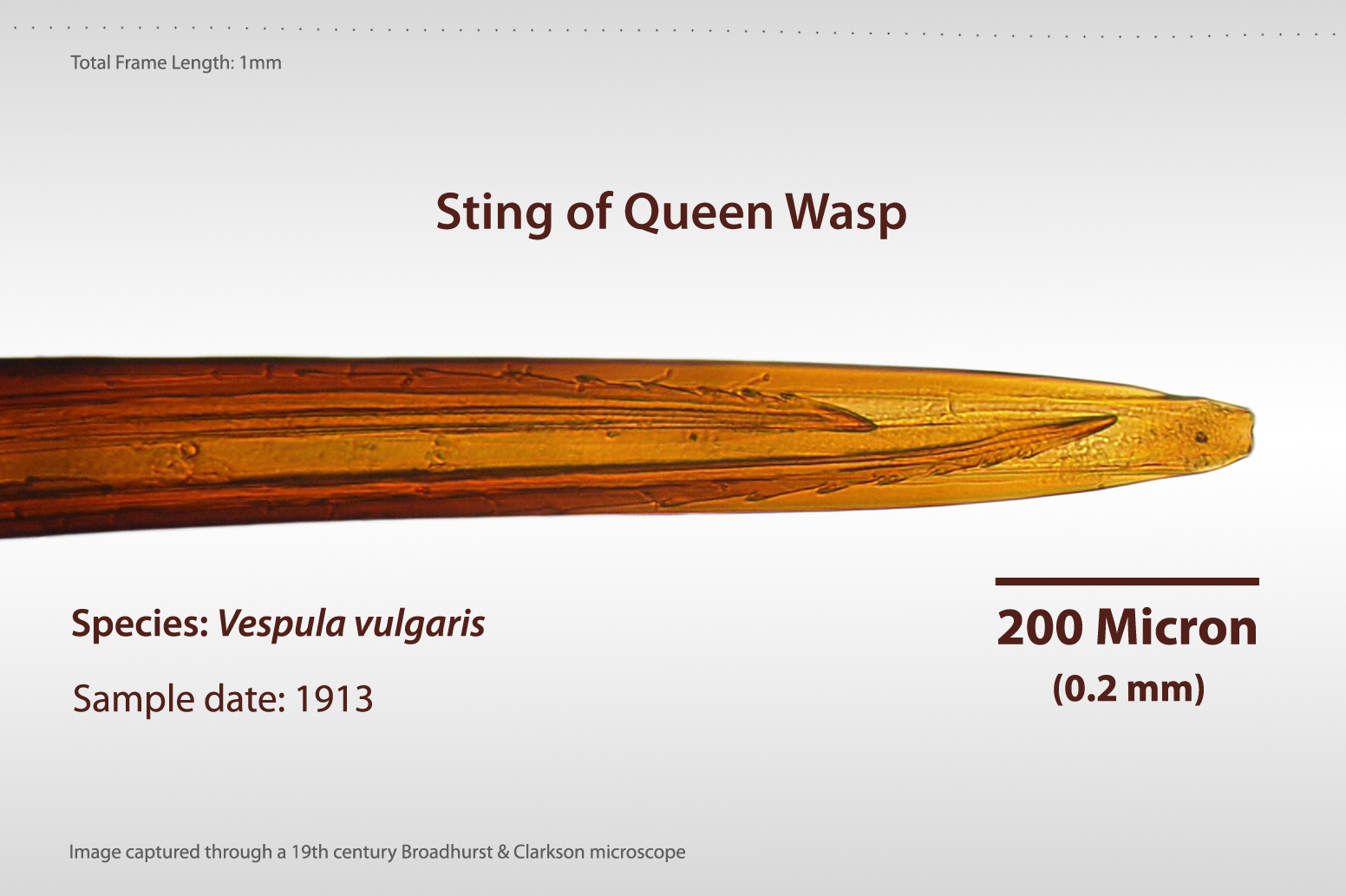|
Hive Tool
A hive tool is a handheld Multi-tool, multipurpose tool used in maintaining and inspecting Beehive, beehives. Hive tools come in multiple variants and styles, and is intended as an all-in-one tool for Beekeeper, beekeepers. The hive tool is the third most essential tool for the beekeeper after the Beekeeping#Protective clothing, beekeeping veil and bee smoker. There are two types of hive tool in common use - the standard hive tool and J-type hive tool. The standard hive tool has a box levering edge and a frame levering edge. The J-type hive tool also has a box levering edge, but on the other side is a j-hook and a small notch. Either type may have a small possibly tapered hole which is intended for removing small nails like a claw hammer. The other job of the hive tool is to lift frames when the hive is propolized. A J-type tool should be used in a specific way – the J goes into the bee space and the notch rests on the hive wall or the frame behind to provide lift. It is recomme ... [...More Info...] [...Related Items...] OR: [Wikipedia] [Google] [Baidu] |
Bee Smoker
A bee smoker (usually called simply a smoker or a smokepot) is a device used in beekeeping to calm honey bees. It is designed to generate smoke from the smoldering of various fuels, hence the name. It is commonly designed as a stainless steel cylinder with a lid that narrows to a gap with a half inch diameter. The base of the cylinder has another small opening that is adjacent to a bellow nozzle. Pumping of the bellows forces air through the bottom opening. The cylinder also commonly has a wire frame around it acting as a structure the user can grab without risk of burning their hand. Some smokers have a hook on the side allowing the user to hang the whole instrument on the side of a hive for easy access during an inspection or attach it to an ALICE belt when not in use. History Long before the invention of the bee smoker, humans had discovered that smoke calmed bees. It is not clear when this practice started but it has been used in various parts of the world where honey is colle ... [...More Info...] [...Related Items...] OR: [Wikipedia] [Google] [Baidu] |
Multi-tool
A multi-tool (or multitool) is a hand tool that combines several individual functions in a single unit. The smallest are credit-card or key sized units designed for carrying in a wallet or on a keyring, but others are designed to be carried in a trouser pocket or belt-mounted pouch. Historical The idea of incorporating several tools in one unit is very old, dating back at least as far as Middle Roman times. Many of these were used for eating. Pocket knives Among the earliest contemporary examples is the Swiss Army knife, as supplied by makers Victorinox and Wenger. The actual version supplied to the Swiss army includes a knife blade, a reamer, a bottle-opener–screwdriver–wire stripper, and a can-opener–screwdriver. Besides Victorinox and Wenger, many other manufacturers now make similar knives. Other versions may include items like a nail file, tweezers, folding scissors, a tooth pick, a magnifying glass, screwdriver bits and others. There are also versions ... [...More Info...] [...Related Items...] OR: [Wikipedia] [Google] [Baidu] |
Beehive
A beehive is an enclosed structure in which some honey bee species of the subgenus '' Apis'' live and raise their young. Though the word ''beehive'' is commonly used to describe the nest of any bee colony, scientific and professional literature distinguishes ''nest'' from ''hive''. ''Nest'' is used to discuss colonies that house themselves in natural or artificial cavities or are hanging and exposed. ''Hive'' is used to describe an artificial/man-made structure to house a honey bee nest. Several species of ''Apis'' live in colonies, but for honey production the western honey bee (''Apis mellifera'') and the eastern honey bee (''Apis cerana'') are the main species kept in hives. The nest's internal structure is a densely packed group of hexagonal prismatic cells made of beeswax, called a honeycomb. The bees use the cells to store food (honey and pollen) and to house the brood (eggs, larvae, and pupae). Beehives serve several purposes: production of honey, pollination of nearby ... [...More Info...] [...Related Items...] OR: [Wikipedia] [Google] [Baidu] |
Beekeeper
A beekeeper is a person who keeps honey bees. Beekeepers are also called honey farmers, apiarists, or less commonly, apiculturists (both from the Latin '' apis'', bee; cf. apiary). The term beekeeper refers to a person who keeps honey bees in beehives, boxes, or other receptacles. The beekeeper does not control the creatures. The beekeeper owns the hives or boxes and associated equipment. The bees are free to forage or leave (swarm) as they desire. Bees usually return to the beekeeper's hive as the hive presents a clean, dark, sheltered home. Purposes of beekeeping Value of honey bees Honey bees produce commodities such as honey, beeswax, pollen, propolis, and royal jelly. Some beekeepers also raise queens and other bees to sell to other farmers, and to satisfy scientific curiosity. Beekeepers also use honeybees to provide pollination services to fruit and vegetable growers. Many people keep bees as a hobby. Others do it for income either as a sideline to other work or as a ... [...More Info...] [...Related Items...] OR: [Wikipedia] [Google] [Baidu] |
Beekeeping
Beekeeping (or apiculture) is the maintenance of bee colonies, commonly in man-made beehives. Honey bees in the genus '' Apis'' are the most-commonly-kept species but other honey-producing bees such as ''Melipona'' stingless bees are also kept. Beekeepers (or apiarists) keep bees to collect honey and other products of the hive: beeswax, propolis, bee pollen, and royal jelly. Pollination of crops, raising queens, and production of package bees for sale are other sources of beekeeping income. Bee hives are kept in an apiary or "bee yard". The keeping of bees by humans, primarily for honey production, began around 10,000 years ago. Georgia is known as the "cradle of beekeeping" and the oldest honey ever found comes from that country. The 5,500-year-old honey was unearthed from the grave of a noblewoman during archaeological excavations in 2003 near the town Borjomi. Ceramic jars found in the grave contained several types of honey, including linden and flower honey. Domestication of ... [...More Info...] [...Related Items...] OR: [Wikipedia] [Google] [Baidu] |
Bee Smoker
A bee smoker (usually called simply a smoker or a smokepot) is a device used in beekeeping to calm honey bees. It is designed to generate smoke from the smoldering of various fuels, hence the name. It is commonly designed as a stainless steel cylinder with a lid that narrows to a gap with a half inch diameter. The base of the cylinder has another small opening that is adjacent to a bellow nozzle. Pumping of the bellows forces air through the bottom opening. The cylinder also commonly has a wire frame around it acting as a structure the user can grab without risk of burning their hand. Some smokers have a hook on the side allowing the user to hang the whole instrument on the side of a hive for easy access during an inspection or attach it to an ALICE belt when not in use. History Long before the invention of the bee smoker, humans had discovered that smoke calmed bees. It is not clear when this practice started but it has been used in various parts of the world where honey is colle ... [...More Info...] [...Related Items...] OR: [Wikipedia] [Google] [Baidu] |
Propolis
Propolis or bee glue is a resinous mixture that honey bees produce by mixing saliva and beeswax with exudate gathered from tree buds, sap flows, or other botanical sources. It is used as a sealant for unwanted open spaces in the beehive. Propolis is used for small gaps (approximately or less), while gaps larger than the bee space (approximately ) are usually filled with burr comb. Its color varies depending on its botanical source, with dark brown as the most common. Propolis is sticky at and above , while at lower temperatures it becomes hard and brittle. When foraging, worker bees primarily harvest pollen and nectar, while also collecting water and plant resin necessary for the production of propolis. The chemical composition and nature of propolis depend on environmental conditions and harvested resources. Types Mixed types of propolis found in European countries with a moderate climate include two or more sources of plant resins (plant species) identified by composition ... [...More Info...] [...Related Items...] OR: [Wikipedia] [Google] [Baidu] |
Hive Frame
A hive frame or honey frame is a structural element in a beehive that holds the honeycomb or brood comb within the hive enclosure or box. The hive frame is a key part of the modern movable-comb hive. It can be removed in order to inspect the bees for disease or to extract the excess honey. History In 1814 Petro Prokopovych invented the world's first beehive which used hive frames. Early prototypes had a large distance between frames, and the frame lay on supporting strips of wood. As a result, the frames were cross-attached by burr comb and propolized to the supporting strips and were difficult to remove. In Prokopovych's design, the frames were placed only in the honey chamber. In the brood chamber, the bees built the combs in free style. Johann Dzierzon described the correct distance between combs in the brood chamber as 1½ inches from the center of one bar to the center of the next. In 1848, Dzierzon introduced grooves into the hive's side walls replacing the strips of wood ... [...More Info...] [...Related Items...] OR: [Wikipedia] [Google] [Baidu] |
Burr Comb
In beekeeping, in a Langstroth hive, burr comb, also known as brace comb and bridge comb, are portions of honeycomb built by the bees in other places than in the intended place in the frames. Burr comb is commonly found on the top of frames, particularly if the hive has been assembled with a void above the frames; burr comb may also be found hanging from the bottom of frames, if the frame itself is too shallow in height for the height of the hive it has been put in. Burr comb can cause problems if they join together frames on the hive which should stay separate (thus 'bridging' the gap between frames with comb). Burr comb can be avoided or minimized by keeping the width of all internal spaces inside the hive to the "bee space" limit of . Care should be taken when removing burr comb, as the adult queen bee A queen bee is typically an adult, mated female ( gyne) that lives in a colony or hive of honey bees. With fully developed reproductive organs, the queen is usually the mother ... [...More Info...] [...Related Items...] OR: [Wikipedia] [Google] [Baidu] |
Bridge Comb
In beekeeping Beekeeping (or apiculture) is the maintenance of bee colonies, commonly in man-made beehives. Honey bees in the genus '' Apis'' are the most-commonly-kept species but other honey-producing bees such as ''Melipona'' stingless bees are also kept. ..., in a Langstroth hive, burr comb, also known as brace comb and bridge comb, are portions of honeycomb built by the bees in other places than in the intended place in the frames. Burr comb is commonly found on the top of frames, particularly if the hive has been assembled with a void above the frames; burr comb may also be found hanging from the bottom of frames, if the frame itself is too shallow in height for the height of the hive it has been put in. Burr comb can cause problems if they join together frames on the hive which should stay separate (thus 'bridging' the gap between frames with comb). Burr comb can be avoided or minimized by keeping the width of all internal spaces inside the hive to the " bee space" li ... [...More Info...] [...Related Items...] OR: [Wikipedia] [Google] [Baidu] |
Brace Comb
In beekeeping, in a Langstroth hive, burr comb, also known as brace comb and bridge comb, are portions of honeycomb built by the bees in other places than in the intended place in the frames. Burr comb is commonly found on the top of frames, particularly if the hive has been assembled with a void above the frames; burr comb may also be found hanging from the bottom of frames, if the frame itself is too shallow in height for the height of the hive it has been put in. Burr comb can cause problems if they join together frames on the hive which should stay separate (thus 'bridging' the gap between frames with comb). Burr comb can be avoided or minimized by keeping the width of all internal spaces inside the hive to the "bee space" limit of . Care should be taken when removing burr comb, as the adult queen bee A queen bee is typically an adult, mated female (gyne) that lives in a colony or hive of honey bees. With fully developed reproductive organs, the queen is usually the mother o ... [...More Info...] [...Related Items...] OR: [Wikipedia] [Google] [Baidu] |
Bee Sting
A bee sting is the wound and pain caused by the stinger of a female bee puncturing skin. Bee stings differ from insect bites, with the venom of stinging insects having considerable chemical variation. The reaction of a person to a bee sting may vary according to the bee species. While bee stinger venom is slightly acidic and causes only mild pain in most people, allergic reactions may occur in people with allergies to venom components. Honey bee stings A honey bee that is away from the hive foraging for nectar or pollen will rarely sting, except when stepped on or roughly handled. Honey bees will actively seek out and sting when they perceive the hive to be threatened, often being alerted to this by the release of attack pheromones (below). Although it is widely believed that a worker honey bee can sting only once, this is a partial misconception: although the stinger is in fact barbed so that it lodges in the victim's skin, tearing loose from the bee's abdomen and leading to ... [...More Info...] [...Related Items...] OR: [Wikipedia] [Google] [Baidu] |








